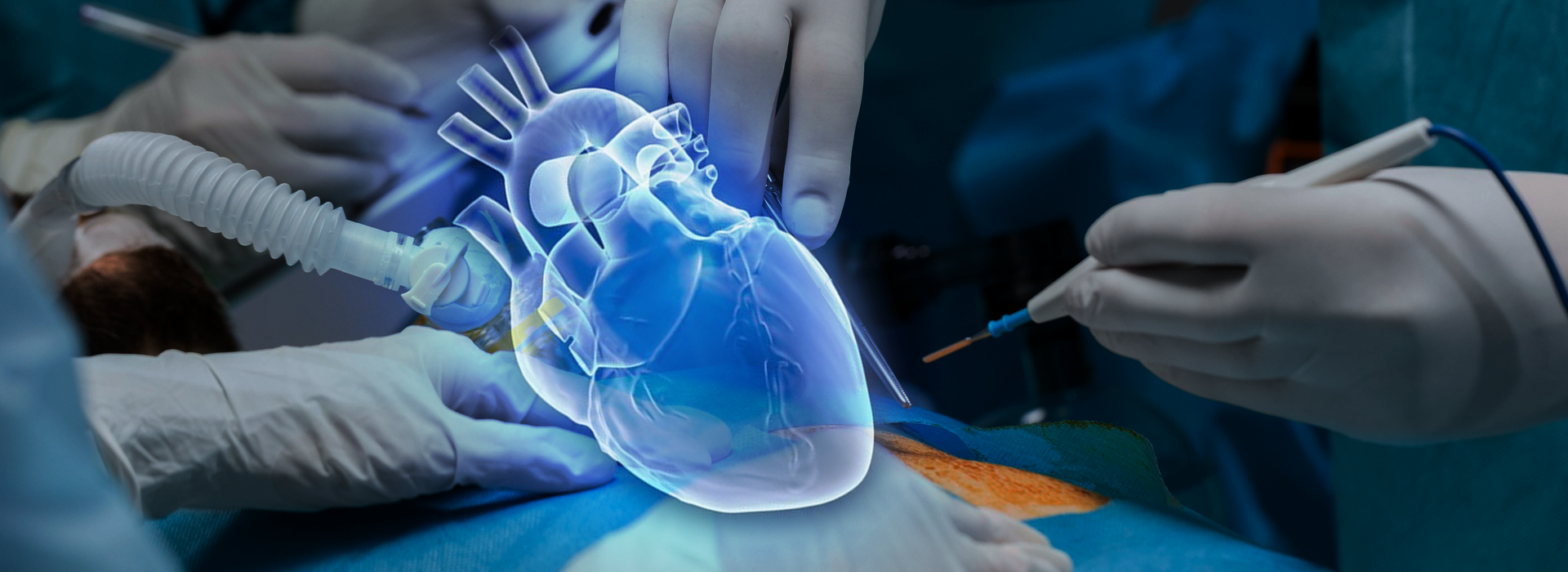Technology supports humanity in every sphere of life. However, some areas are more prone to its impact, and the medical field is one of the greatest proving grounds for future-forward solutions. Since the beginning of civilization, humanity has strived to cure illnesses, care for the wounded, and provide healthcare in the broad sense. Now, a few thousand years after the first medication was recommended, we know that not every idea during this journey was a good one. Luckily, many ailments can nowadays be cured differently than by visiting a local blacksmith or signing up for some casual bloodletting.
Over the ages, technology has gained well-deserved recognition for enhancing medical development, from inventions widely known, like laser eyesight correction, in vitro, and advanced prosthetic devices, to novelties still to reach a wider audience. The digital transformation of the medical field covers various technologies creating new efficient solutions. Healthcare providers gained (just a few decades ago) unexpected allies who enable accuracy, reliability, and quality of services unknown before.
Telehealth, sensors, and beacons fueling the Internet of Things, Big Data, automation, artificial intelligence, and last but not least, augmented reality, are pillars of the future of healthcare.
Pains and sores of the medical field
Staff shortages
Public health is facing an alarming staffing shortage. The problem reached the awareness of the general audience along with the COVID-19 pandemic, exposing the problem on a global scale.

With the growing global population, the medical population should grow as well. Yet, forecasts show that in a few years, instead of 80 million professionals necessary to cater to the needs, there will only be 62 million. Moreover, half of the demand is for nurses and midwives, who are lacking by 9 million.
Availability of aid
Even in a jam-packed city, first responders may be at the scene within minutes. However, the situation changes dramatically for inhabitants of small towns and rural communities, with often just a single ambulance within sight. It often takes just two concurrent events to paralyze the local emergency service, leaving other persons injured at the mercy of medics from neighboring stations, which can be located tens of kilometers away.
Burnout
The gloomy observation is that not only are there not enough healthcare staff out there, but they’re burning out and at risk of quitting and retraining in other professions. There are more reasons for the – pun unintended – burning problem, but one cause seems to prevail. Emotional exhaustion and a declining sense of accomplishment accompany medics, partly resulting from a shortage of medical services. With no mental or psychiatric support, doctors show a decline in their well-being, due to overworking and being overwhelmed by the system.
Education
Medical studies are difficult for a reason (part of the reason may be faculties in anatomy and pharmacology, which made us at Nsflow decide to choose algorithms and code over learning Latin. We’re perfectly fine just watching it on House, MD, or Grey’s Anatomy and leaving the real stuff to professionals, thank you very much). Having said that, the medical field educates not only doctors and nurses but an array of other professions, all vital to keeping healthcare running: midwives, Emergency Medical Technicians (EMTs), medical assistants, therapists, technicians, and associated personnel. The breakdown and naming differ depending on the country; still, the conclusion is that education in medical professions needs to become more accessible in the upcoming years to cater to the growing demand.

presentation to try
Nsflow in action
Examples of augmented reality in healthcare
Access to care
No matter where doctors are located, first responders can always consult cases and procedures. Whether providing care in rural areas or arriving first at the scene and waiting for other personnel to arrive, EMTs equipped with AR devices establish real-time connections and have access to necessary information and expertise to proceed with life-saving procedures. This aspect has particular meaning for emergency systems where not every ambulance is staffed by doctors, and EMTs and nurses have restricted authorization to perform actions independently. In some events, depending on local capacities and legislature, medical personnel can carry out more advanced procedures when supervised by doctors. Experts can assess the case using cameras built-in in devices worn by on-site personnel, giving directions and guiding technicians through subsequent steps of first aid. The utilization of industrial-grade AR equipment (like RealWear Navigator 500) enables operation in even the harshest conditions.
These cases make for a suitable place to incorporate AR platforms with the potential to handle safe and robust connections, along with live annotations, reporting, and data aggregation for future uses. 35% of ambulance personnel admit telemedicine can improve the accuracy of diagnosis before the patient event reaches the ER. Access to experts with just AR-ready devices is a chance not only for other medical personnel but also for individuals without skills in life-saving. Directions given in real-time can be crucial for the survival of patients before an ambulance arrives, empowering even regular bystanders to perform certain actions. With insufficient professionals available, AR devices placed in visible locations in, e.g., hospitals and retirement homes, give other personnel and visitors a chance to respond to energies with the support of remote experts. Augmented reality in hospitals can help significantly with reducing workload among personnel and streamlining the care process.
Real-time support
Utilization of AR in healthcare is not limited to events of direct threats to life and health. Incorporating augmented reality in labs and research facilities allows for work continuity and prevents unplanned downtimes in case of equipment malfunctions. On-site technicians and researchers can contact maintenance and services experts to conduct recovery procedures. Handling breakdowns with own resources allows for a reduction of costs of expert travel and downtimes, contributing to operational continuity and uninterrupted work and research.
Education/training/retraining
AR training won’t replace traditional medical schools, at least not anytime soon. What it is capable of, though, is supplementing classroom education with access to standardized digital content, available to users 24/7, no matter their location. Utilizing AR platforms allows for the aggregation of knowledge, tracking progress, and convenient updating anytime new material is available. Augmented reality apps for healthcare include tools like Complete Anatomy, offering an inner body experience, AR-throscopy Shoulder for mastering arthroscopic skills, and COVID-19 Coronavirus Educational AR, providing substantial content on the virus and its characteristics.
Battling burnout
Technology may not be a direct answer to the dynamically rising problem of personnel burnout, but AR’s benefits translate into creating a more friendly and efficient environment. Transforming the way knowledge is distributed and patients are taken care of leads to workloads easier to handle. Medical professionals gain a powerful tool in their daily duties, becoming better prepared for facing challenges related to the dynamic influx of requests.
3D modeling
Digital models are used in both training and real-life scenarios. With the help of digital twins, representing physical objects in virtual space, users can glimpse inside a working unit – whether it’s a piece of machinery or, in this case, a living organism. In mechanical applications, digital twins can reduce unplanned downtimes and the need to halt machines to look inside. In medical use cases, the solution (created with multimodal patient data, real-time updates on patient and environmental variables) can be used to, e.g., measure and forecast patient response to treatment and detect future ailments for efficient prevention of future health issues. With the help of AR and AI, medical providers can gather and analyze extensive datasets for creating personalized medicine while streamlining clinical trials and improving public health matters.
Caring for aging societies
According to the World Health Organization (WHO), by the end of this decade, 1 in 6 people in the world will be aged 60 years or older. By 2050, the population of citizens aged 80 years or more will triple current numbers and reach 426 million people. The ongoing aging leads to challenges on an unprecedented scale, for which healthcare providers may not be prepared yet. With a growing disproportion between those in need of care and those capable of providing it, digital technology comes across as valuable support.
As people age, they are very likely to develop several conditions related to the passing of time. Conditions such as arthritis, reduced mobility, and a decrease in physical capacities impact the elderly, who require frequent consultations. Augmented reality will help doctors and nurses diagnose and care for residents of assisted living facilities, nursing homes, and retirement homes. With AR, even small medical teams can oversee the health and well-being of elderly residents and respond swiftly to their discomforts.
How will augmented healthcare continue to grow?
All of the above-mentioned applications of augmented reality in medicine depend heavily not just on the advancement of technology but legal regulations and their impact on shaping healthcare. The benefits of augmented reality in healthcare are still to be comprehended by decision- and lawmakers. While lawmakers may seem reluctant to incorporate digital solutions into patient care, the worsening shortage of professionals will continue to plague the aging society and patients living in distant locations. Although the human factor in delivering care is highly valued, when it comes to a choice between no medical care available and digitally enhanced medical care, the greater good should be chosen to ensure human well-being. Digital transformation in medicine allows for increasing access to necessary services, improving competency levels among professionals, meeting medical needs, accelerating diagnoses, and fostering self-directed care. The future of augmented reality in healthcare looks bright, as its potential is yet to be fully realized.
With that in mind, we’re firmly convinced that augmented reality is on the verge of reshaping healthcare as we know it. Hopefully, when we grow old and spend our retirement years in some nice, distant hut in the woods, our doctors and nurses will be a few clicks away.
As for now, we’re contributing to the development of AR solutions to support healthcare professionals in delivering the best services to patients in need, be it located 500 kilometers away. Learn more about how Nsflow assists your staff in providing medical services.



















